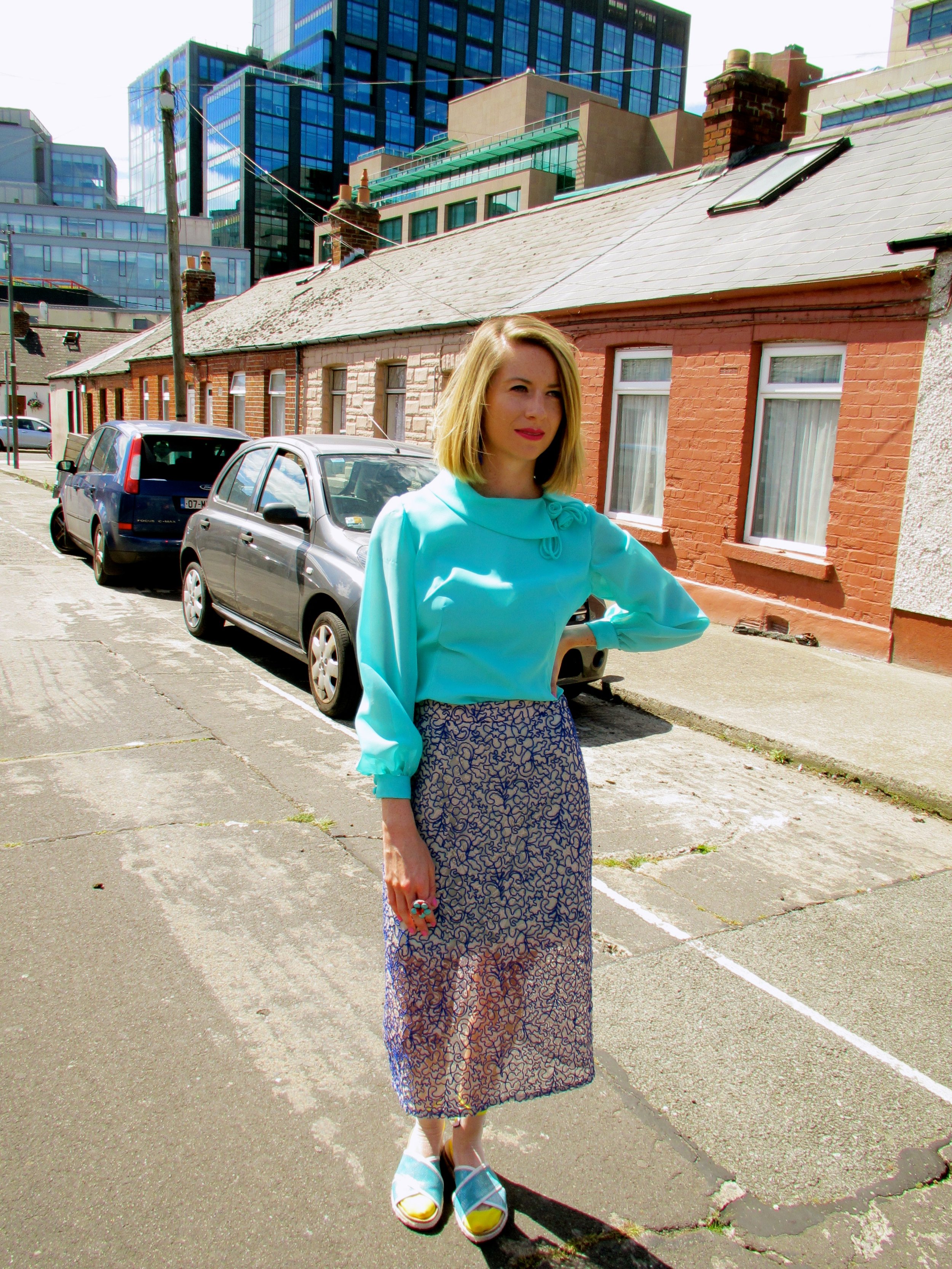ANTIQUE ORIGINS
From post-war London to hippie-centric Haight Ashbury: how vintage fashion captured the zeitgeist of the ‘60s and ‘70s

















Photographed by Christina Higgins
“Our dress is our answer to a dull world”: In 1955, post-war Britain was on the brink of an explosive new world – this was the era when the teenager was invented and the notorious Teddy Boys ruled the streets of London. It was also the beginning of vintage fashion.
Savile Row tailors had marketed Edwardian fashion in 1949 to the wealthy Mayfair men – an anti-establishment, subversive move saw the working class Ted’s claim the Edwardian drape jacket as their own and flaunt their decadence at every dance, picture house, and street fight going. The posh boys were horrified: “Absolutely the whole of one's wardrobe immediately becomes unwearable,” whined one. Most Ted’s thrifted, finding second-hand suits on sale in various markets, others had suits made to measure by back street tailors – they paid in instalments. An article in The Times in 1955 describes the Teddy Boys dapper style: “The boys made a half-hearted attempt at the whole ensemble, which consisted of a brightly coloured and velvet trimmed frockcoat, ornamental waistcoat, drainpipe trousers and a slim-jim western-style tie. Shoes could vary – Teds might wear shiny lace-ups, brothelcreeepers or winkle-pickers.”
In 1965, The New York Times attempted to define the ‘fancy-dress’ craze invading the streets of London: “England’s young began swooping down to Portobello Road to buy antique military jackets & delicately handmade Edwardian dresses.” Before the mid-1960s, wearing ‘used’ or ‘second-hand’ clothes of a person long dead was an unappealing prospect – it belonged to those who couldn’t afford to join America’s shiny new post-war world of addictive consumerism. Elsewhere, in San Francisco, the young hippies of Haight-Ashbury were falling for the Victorians. They rummaged through closets and thrift stores for romantic dresses in lace and velvet. They preferred to spurn consumerism, and assert their individuality than buy into the mainstream. The New York Times admired their creativity: “Clever women have discovered that antique clothes have a magnificent cut and hand-done details not often found in clothes these days.” New York was also looking to the past – Harriet Love opened Vintage Chic in 1965, a boutique that sold what were then known as “antique” garments despite the fact that they were just a few decades old. She wrote, “you had to be a little weird or theatrical to buy it, let alone wear it on days other than Halloween.”
As more of these fashion-forward young folk wore secondhand clothing in the later ‘60s and early ‘70s, the prevailing disdain for used clothes began to shift. At the time, dressing in vintage styles was just a way of expressing yourself, by wearing clothes that most people didn’t wear. Trail-blazing and provocative magazine Nova’s (1965-75) fashion editor Caroline Baker (the woman widely credited as being the first fashion stylist) styled her shoots using second-hand and vintage clothing from thrift stores. Her inspiration came from the street – her brief for each shoot was to be a bit shocking, break the rules and offer something different to the bourgeois grown-up style driven by Paris and worn by society women like Jackie Kennedy. Granny Takes a Trip was set up in 1966 on the King’s Road in Chelsea by Nigel Waymouth, his girlfriend Sheila Cohen and John Pearse, an ex-mod and Savile Row-trained tailor. They were keen to cash in on the craze, selling vintage clothes with an emphasis on fine tailoring and a decadent edge to The Beatles and The Rolling Stones – the past was slowly seeping into the present.
In 2016, we continue to delve into old codes of dress and mix with more contemporary styles. Here, I combined a turquoise dress from the early 1960s with a 1950s-style, Christopher Kane-esque midi skirt, sheer egg yolk socks, second-hand turquoise cross-over sandals, and a chunky embroidered floral ring. Equally, you may reference every era in one outfit – go for a blue paisley pussy-bow blouse, black velvet slip dress, cropped tweed jacket, black patent Mary Janes and a flick of black eyeliner. Online vintage platform Open for Vintage offers endless options – they are the new thrift shop and modern closet combined. They cater to the inner hippie, Teddy Boy and Nova Magazine fan in everyone. If you’re heading for cocktails with the girls, choose a black wool mod dress from the sixties or a green sequin mini dress from the nineties and pair with a velvet blazer, black and white loafers, and a 1920s Art Deco beaded clutch. If you’re feeling funky and heading for a casual jaunt around town, mix and match high-waisted jeans with a cropped multi-coloured jacket from the eighties, a silk frilly red blouse and lilac runners. Steal inspiration from Caroline Baker, who used to run around London looking like Twiggy, all legs and a five-point haircut, defying convention and creating a a new way of dressing. “I started putting girls in men’s clothes. Now, Yves Saint Laurent had just produced the tuxedo, but who could afford Yves Saint Laurent? So I went to Moss Brothers, where they had a great second-hand department. It didn’t have to fit, just put a gold belt around it and then wear high heels. I also did a shoot with the photographer Hans Feurer using all this army-surplus gear I’d found and was wearing at the time.” Fashion had become less about what was worn and more about how it was worn – this concept still triumphs today.
Credits: 1960s turquoise chiffon dress with floral detail, Harlequin, blue embroidered midi skirt, Topshop, sheer egg yolk socks, Monki, turquoise cross-over sandals, Tk Maxx, embroidered floral ring, Shanghai